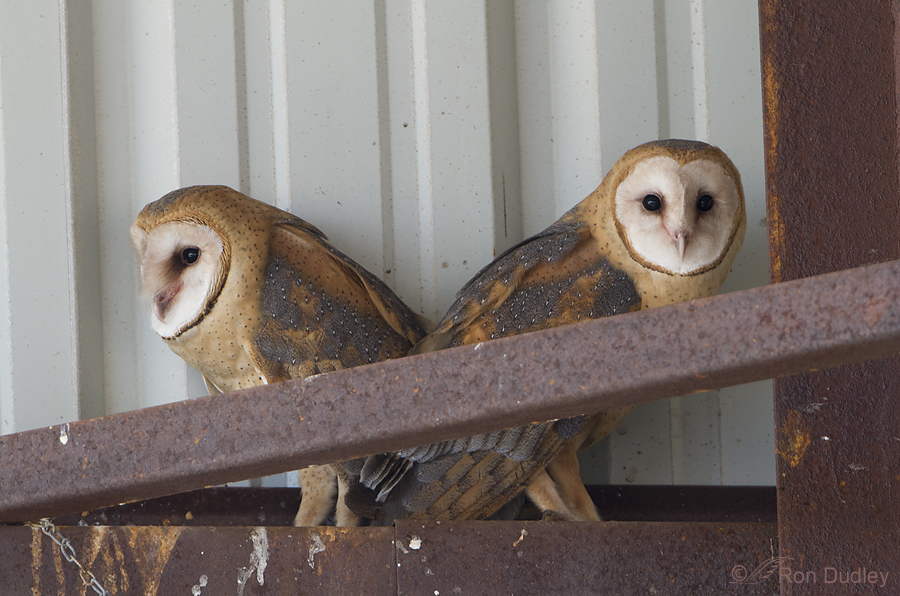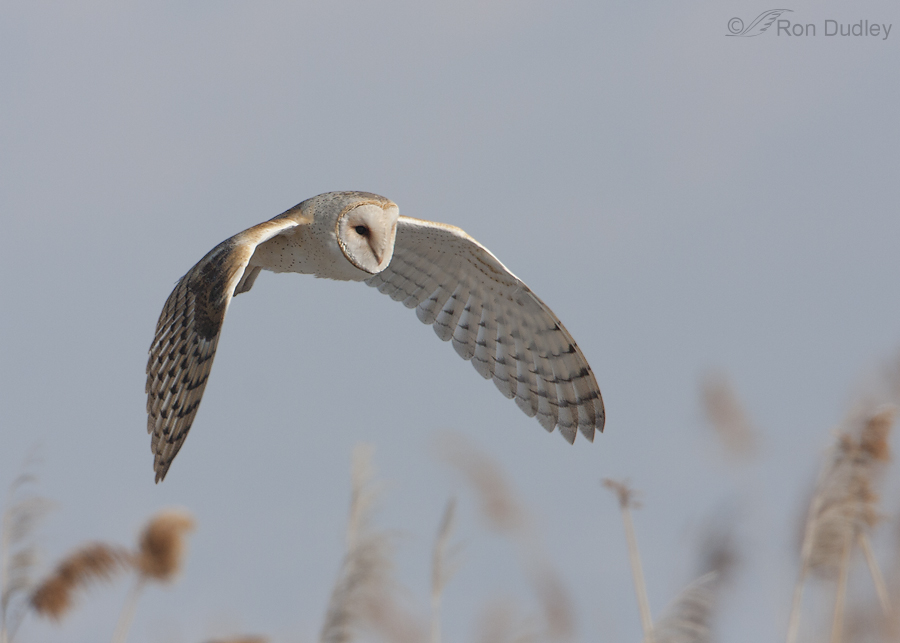Usually when I’m photographing hunting Barn Owls they’re flying above the stands of Phragmites so I typically get a sky background. If I’m lucky they’ll be low enough so that I include some of the phrags at the bottom of the frame to include habitat in the image. 1/1600, f/8, ISO 400, 500 f/4, 1.4 tc, natural light, not baited, set up or called in But occasionally the bird will drop down low enough so that I get only phrags in the background and no sky. For the sake of variety I like the effect, though it sure makes it difficult to keep focus locked on the bird with the vegetation in the background so close to the owl. 1/2000, f/8, ISO 400, 500 f/4, 1.4 tc, natural light, not baited, set up or called in On the very next pass the owl was high enough that I got some sky in the background, along with the frosty Phragmites plumes. 1/2000, f/8, ISO 400, 500 f/4, 1.4 tc, natural light, not baited, set up or called in Two shots in the burst later the owl was slightly past me and beginning to turn away but this angle gave me a strong catch light in the eye and a somewhat dramatic look at the fully extended left wing. It’s fascinating to watch these birds in the air. Their buoyant flight with deep, slow wingbeats as they cruise rather slowly will change dramatically when they twist and turn at the beginning of a dive for prey. These owls…
Continue reading



